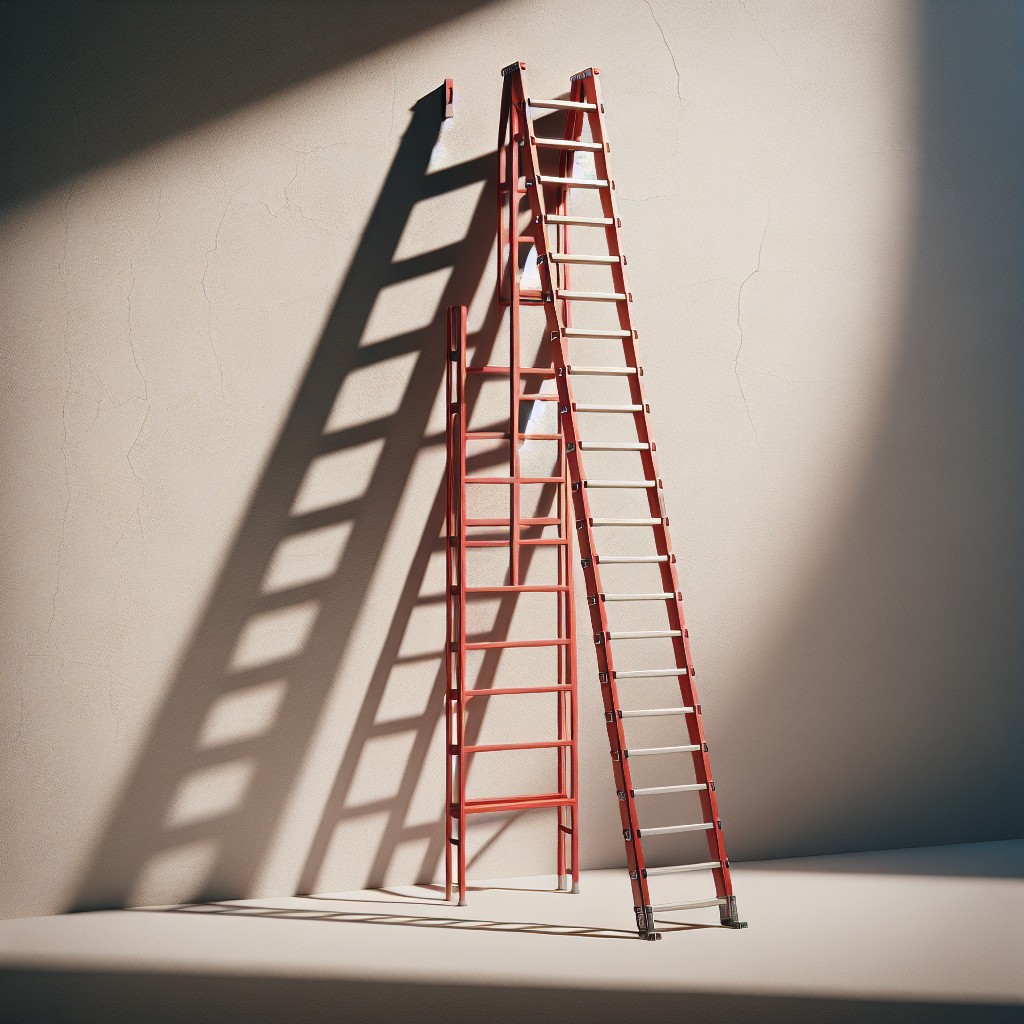Last updated on
The correct angle of inclination for both single and extension ladders is approximately 75 degrees from the ground, adhering to the 4-to-1 rule where the base should be 1 foot away from the wall for every 4 feet of ladder height.
Key takeaways:
- Correct angle of inclination for ladders is approximately 75 degrees.
- Use the 4-to-1 rule: base should be 1 foot away from wall for every 4 feet of ladder height.
- Use bubble indicators to ensure ladder is set at correct angle.
- Secure extension ladders properly with stabilizers, rubber pads, and rope ties.
- Inspect ladder before each use for cracks, bends, and secure rungs.
Ladder Inclination Basics

To ensure safety and stability when working at heights, setting the correct ladder inclination is crucial. A ladder that’s too vertical can fall backwards easily, while one that’s too slanted can slide out from underneath. It’s the delicate balance between these two angles that provides maximum safety. Ideal ladder positioning enables you to comfortably reach your work area without straining or leaning, reducing the risk of falls.
The position of the ladder also affects the even distribution of your weight and the ladder’s load across its feet, ensuring a firm grip on the ground. Remember, proper ladder inclination protects not just the user but also bystanders from potential accidents.
The 4-to-1 Rule for Ladder Setup
Employing the 4-to-1 rule is essential for safe ladder use. To apply this guideline, for every four feet of height you need to climb, the base of the ladder should be one foot away from the wall or surface it’s leaning against. This ratio ensures a stable working angle, reducing the risk of the ladder slipping out from beneath you or tipping backwards.
Here are key points to consider:
- Measure the distance from the ladder’s base to the wall to achieve the 4-to-1 ratio.
- For instance, if the ladder reaches 16 feet high, the base should be 4 feet away from the wall.
- This ratio allows for ample stability without compromising reach or safety.
- Verify the angle by maintaining a comfortable reach without overextending or leaning sideways.
Using Bubble Indicators to Determine Ladder Angle
Bubble indicators, or spirit levels, are essential tools for ensuring a ladder is set at the correct angle. As a practical guide, follow these steps when using a bubble indicator:
1. Position the bubble level either on a rung of the ladder or against the side rail.
2. Adjust the ladder until the bubble is centered within the indicators on the level.
3. Double-check that the bubble remains centered while you move up and down the ladder to account for any ground irregularities.
4. If the bubble moves out of center at different heights, reposition the ladder on firmer or more even ground.
By using a bubble indicator, you ensure a precise and secure angle for your ladder every time, which improves stability and safety. Remember that proper level placement helps prevent dangerous leans that could lead to falls.
Securing Extension Ladders for Optimal Inclination
Safety is paramount when positioning an extension ladder, as improper inclination can lead to slippage and accidents. To secure the ladder, extend it fully and move its base away from the vertical surface until it reaches the safe 4-to-1 ratio, where the base is one foot away for every four feet of height up to the contact point. Ensure both feet of the ladder rest firmly on solid, level ground and engage all locks and braces provided by the manufacturer.
To prevent movement at the top, the use of a stabilizer or stand-off can be beneficial. This accessory attaches to the top of the ladder and broadens the area of contact with the supporting surface. If the ladder’s feet have rubber pads, check that they are not worn out; replace them if necessary to enhance grip. On soft ground, consider using a board under the ladder’s feet to distribute the weight more evenly and prevent sinking.
When possible, tie off the top of the ladder to a reliable anchor point using rope or ladder hooks. This step is especially crucial when working at considerable heights or in windy conditions. Finally, never set up the ladder near doors or high-traffic areas without proper signage or barriers to alert passersby.
Importance of Ladder Inspection Prior to Use
Inspecting a ladder before each use is critical to ensure safety and optimal performance. Look for cracks, bends, or splits on side rails, as these can compromise ladder stability. Ensure that rungs are secure and not slippery, which could lead to falls.
Check that all locking mechanisms are functioning correctly to prevent the ladder from collapsing. Before extending an extension ladder, verify that the ropes or pulleys are in good condition and that the extension locks engage properly. Finally, make sure that all safety labels and instructions are legible and adhere to any listed precautions.
Regular maintenance checks can help extend the lifespan of a ladder and keep you safe while working at height.




